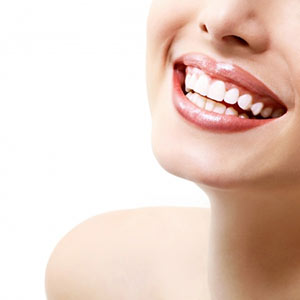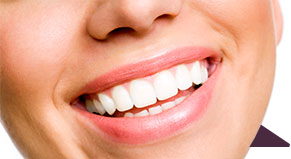World Oral Health Day Campaign
March 27th, 2017

Healthier mouths achieve happier lives — that’s the motto of the World Oral Health Day campaign. The year-long campaign is launched every year on March 20th as part of a movement to create more awareness about the importance of having good oral health. The goal is to bring together all members of communities — government, health associations, and the public, to work toward preventing oral disease and maintaining mouth health.
The History of The World Oral Health Day Campaign
Although March 20, 2013 was the first date the campaign was widely recognized, it had its roots further back to 2007. The campaign was started by FDI World Dental Federation, a worldwide organization of dental professionals representing over 135 countries. The first celebration had originally taken place in September, but was later moved to March 20 for two reasons – September conflicted with an important Dental Congress meeting of the organization, and the significance of the numbers “32” and “20” could be represented in the date March 20, or 3/20. (Adults should have 32 healthy natural teeth, and babies or seniors should have 20).
Each year, the campaign focuses on a specific theme to target awareness and improvement efforts in that area. Past themes have included:
2013: Healthy Teeth for a Healthy Life
2014: Celebrating Healthy Smiles
2015: Smile for Life!
2016: Healthy mouth, Healthy Body
Each theme is specific enough to spark focused action but broad enough to be able to include individuals from all walks of life within its significance. The first year’s theme in 2013, for example, focused on the recognition that oral health problems can be just as lethal as other risk factors for chronic disease. Last year’s theme, “Healthy Mouth, Healthy Body” focused on a holistic view of oral health being one in the same as overall health.
Participating organizations get access to the campaign website, where they can get promotional materials such as posters, logos, and more to raise awareness of the celebration. Each year, the number of countries taking part in the campaign continues to increase, which shows that a growing number of world leaders are recognizing oral health to be important.
World Oral Health Day 2017 Campaign: Live Mouth Smart
This year’s theme is “Live Mouth Smart” — understanding that your oral health can affect your quality of life now and later on. This campaign focuses on four main points: safeguarding your oral health, avoiding risk factors, understanding that oral health is more than just a nice smile, and getting involved with the campaign’s activities. Major partners sponsor events all over the world to help spread the word. This year in Nigeria, for example, Pepsodent sponsored a “Health Walk,” which, as part of the “Brush Day and Night Campaign” will seek to educate millions of Nigerian families on best oral health practices.
The World Oral Health Day Campaign is also being celebrated widely on social media, with the hashtags #WOHD17 and #LiveMouthSmart. Premade headers are available on their website so people can show their support online. Posters and other pamphlets or resources are available for use on the website as well.
Although March 20, 2017, is the official launch date of this campaign, the message of fostering and sustaining good oral health goes on all year. The FDI World Dental Federation has already created a sense of urgency around the issue of oral health, and the campaign and movement will hopefully continue to grow and change habits and lives of many individuals around the world.
If you have any questions about how to take care of your teeth, or if you’d like to book an appointment with Chicago’s number one dentistry, Water Tower Dental Care, contact us today.


 There are many ways to brush teeth, but some are much more effective than others. Using a Sonicare Electric Toothbrush, the number one brand recommended by dental professionals, delivers a superior clean for a healthier mouth. For optimal results, even this advanced toothbrush needs to be used properly.
There are many ways to brush teeth, but some are much more effective than others. Using a Sonicare Electric Toothbrush, the number one brand recommended by dental professionals, delivers a superior clean for a healthier mouth. For optimal results, even this advanced toothbrush needs to be used properly. When you’re fast asleep, the last thing you’re thinking about is your teeth. (Unless you’re having a dental dream, of course.) So it’s important to make sure that your teeth are well protected before you hit the hay for a long night of sleep. We’ve put together a short checklist that you can use every night before you go to bed to keep your teeth protected all night long.
When you’re fast asleep, the last thing you’re thinking about is your teeth. (Unless you’re having a dental dream, of course.) So it’s important to make sure that your teeth are well protected before you hit the hay for a long night of sleep. We’ve put together a short checklist that you can use every night before you go to bed to keep your teeth protected all night long. Think
Think  If you’re a fan of DIY dental care, you’ve probably heard of using baking soda to clean and whiten your teeth. Before you take on any DIY healthcare you read about online, it’s important to do your research. Using baking soda too regularly could cause irreversible damage to your enamel. However, that doesn’t mean you should never use baking soda on your teeth. Let’s explore if baking soda is actually good for your teeth now.
If you’re a fan of DIY dental care, you’ve probably heard of using baking soda to clean and whiten your teeth. Before you take on any DIY healthcare you read about online, it’s important to do your research. Using baking soda too regularly could cause irreversible damage to your enamel. However, that doesn’t mean you should never use baking soda on your teeth. Let’s explore if baking soda is actually good for your teeth now. Everyone hates teeth discoloration, which is why whitening strips are so popular. But what do you do when the discoloration appears in the form of white spots on your teeth? Although these spots are primarily a cosmetic concern, they can affect oral health and should be treated.
Everyone hates teeth discoloration, which is why whitening strips are so popular. But what do you do when the discoloration appears in the form of white spots on your teeth? Although these spots are primarily a cosmetic concern, they can affect oral health and should be treated.
 The last thing you want is yellow teeth after years of wearing braces. But unfortunately, it’s a very common occurrence. If you don’t take care of your mouth while you’re wearing braces, you might be surprised to see white squares where your braces were on yellow-stained teeth after your dentist removes them. Thankfully, it’s easy to avoid this experience. Here are some reasons why people get yellow teeth after braces and how to prevent this from happening. We’ll also talk about how you can fix stained teeth after braces.
The last thing you want is yellow teeth after years of wearing braces. But unfortunately, it’s a very common occurrence. If you don’t take care of your mouth while you’re wearing braces, you might be surprised to see white squares where your braces were on yellow-stained teeth after your dentist removes them. Thankfully, it’s easy to avoid this experience. Here are some reasons why people get yellow teeth after braces and how to prevent this from happening. We’ll also talk about how you can fix stained teeth after braces. Many people think they should brush their teeth right after they eat. At first glance, this seems to make sense. If you brush your teeth after a meal, you should keep your teeth healthy by getting rid of the food in your mouth, right?
Many people think they should brush their teeth right after they eat. At first glance, this seems to make sense. If you brush your teeth after a meal, you should keep your teeth healthy by getting rid of the food in your mouth, right? Receding gums happen when the gum tissue that surrounds the lower ends of the teeth begin to wear away and pull back, thus exposing the tooth and possibly its root. Gaps between the teeth, also known as pockets, form, allowing bacteria to nestle inside the available space causing more harm, including inflammation, gum disease, and tooth loss. To help prevent your gums from receding, it helps to know what causes receding gums, and ultimately, how to prevent it.
Receding gums happen when the gum tissue that surrounds the lower ends of the teeth begin to wear away and pull back, thus exposing the tooth and possibly its root. Gaps between the teeth, also known as pockets, form, allowing bacteria to nestle inside the available space causing more harm, including inflammation, gum disease, and tooth loss. To help prevent your gums from receding, it helps to know what causes receding gums, and ultimately, how to prevent it.

 Do you have trouble convincing your children it’s time to brush their teeth? Many kids find it difficult to want to scrub their tiny molars as they see it just like any other chore. However, with the right attitude you can make brushing teeth a fun activity that your children get excited to do. Healthy teeth in young children are extremely important, so try out a few of these tips next time you’re brushing with your kids.
Do you have trouble convincing your children it’s time to brush their teeth? Many kids find it difficult to want to scrub their tiny molars as they see it just like any other chore. However, with the right attitude you can make brushing teeth a fun activity that your children get excited to do. Healthy teeth in young children are extremely important, so try out a few of these tips next time you’re brushing with your kids. While listing out your New Years resolutions this time around, consider adding a few resolutions for your health, and specifically, your mouth. Keeping your teeth, gums, and tongue in good shape can help you in the years to come. Practicing good oral hygiene will help you look and feel good, along with allow you to avoid major dental surgeries and complications in the future. Here are 5 tips you can easily make into New Years resolutions for a better, healthier smile.
While listing out your New Years resolutions this time around, consider adding a few resolutions for your health, and specifically, your mouth. Keeping your teeth, gums, and tongue in good shape can help you in the years to come. Practicing good oral hygiene will help you look and feel good, along with allow you to avoid major dental surgeries and complications in the future. Here are 5 tips you can easily make into New Years resolutions for a better, healthier smile. It may seem elementary to you, but believe it or not, many people still don't brush their teeth correctly. Either they don't do it for long enough time, concentrate on the wrong areas, brush too hard, or just completely misuse the toothbrush. For our Water Tower Dental Care patients, and anyone else that has discovered our blog, we would like to provide you with the steps to properly brushing your teeth.
It may seem elementary to you, but believe it or not, many people still don't brush their teeth correctly. Either they don't do it for long enough time, concentrate on the wrong areas, brush too hard, or just completely misuse the toothbrush. For our Water Tower Dental Care patients, and anyone else that has discovered our blog, we would like to provide you with the steps to properly brushing your teeth. Wet the toothbrush and apply a thin strip of toothpaste. Although there is a plethora of toothbrushes to choose from, we don't recommend a specific design of brush, rather it's more important to find a brush that if manual is soft and if electric, ultrasonic. Richard H. Price, DMD and consumer advisor for the
Wet the toothbrush and apply a thin strip of toothpaste. Although there is a plethora of toothbrushes to choose from, we don't recommend a specific design of brush, rather it's more important to find a brush that if manual is soft and if electric, ultrasonic. Richard H. Price, DMD and consumer advisor for the  When using a manual soft toothbrush, start by brushing the outer surface of your upper teeth, then your lower. Keep the bristles at a 45-degree angle from your teeth and sweep or roll away from the gum line. Your gums are very sensitive and must be treated with care when brushing. Never brush up, into the gums, always away. When using an electric ultrasonic toothbrush, hold bristles at a 45-degree angle at gum line and slowly move brush across teeth.
When using a manual soft toothbrush, start by brushing the outer surface of your upper teeth, then your lower. Keep the bristles at a 45-degree angle from your teeth and sweep or roll away from the gum line. Your gums are very sensitive and must be treated with care when brushing. Never brush up, into the gums, always away. When using an electric ultrasonic toothbrush, hold bristles at a 45-degree angle at gum line and slowly move brush across teeth. After the outer surface, focus on the inner surface of the teeth, first the upper then lower teeth. Again, brush away from the gums at a 45-degree angle.
After the outer surface, focus on the inner surface of the teeth, first the upper then lower teeth. Again, brush away from the gums at a 45-degree angle. Clean the chewing surfaces of the teeth. You can be slightly more aggressive with the surface of the teeth, but nothing too hard. Pay extra attention to the hard-to-reach back teeth and areas around fillings or crowns.
Clean the chewing surfaces of the teeth. You can be slightly more aggressive with the surface of the teeth, but nothing too hard. Pay extra attention to the hard-to-reach back teeth and areas around fillings or crowns. Once you've finished on the teeth, give your tongue a gentle brush to remove any bacteria and to keep your breath fresh longer. We highly recommend using a tongue scraper as well.
Once you've finished on the teeth, give your tongue a gentle brush to remove any bacteria and to keep your breath fresh longer. We highly recommend using a tongue scraper as well.




 Website Powered by Sesame 24-7™
Website Powered by Sesame 24-7™